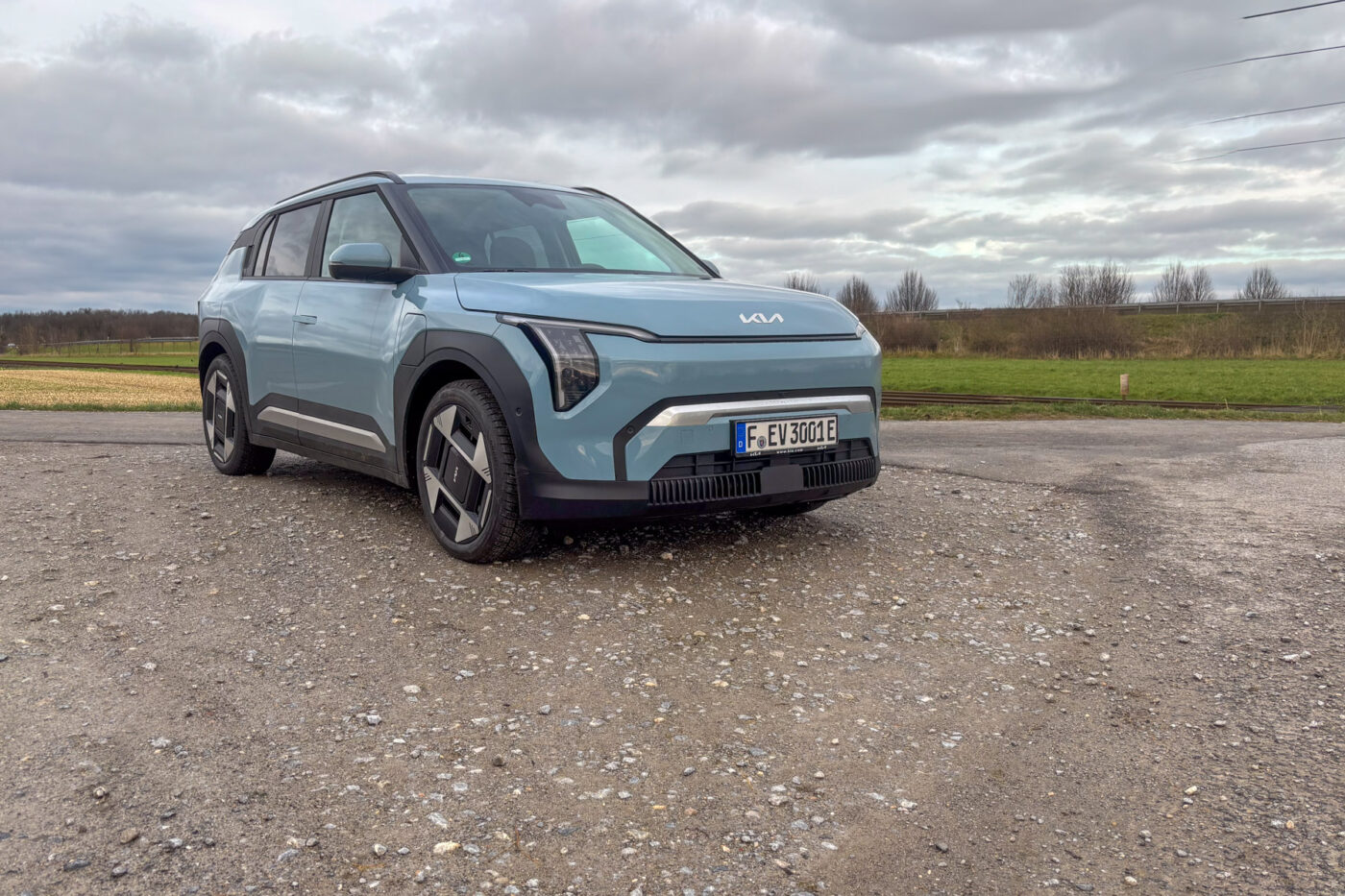
Kia EV3 test drive: a worthy Niro EV successor
On paper, the EV3 can fully exploit the advantages of an exclusively electric architecture with Kia’s ‘Electric Global Modular Platform’ (E-GMP). Although at 4.30 meters, the compact SUV is twelve centimetres shorter than the Niro EV, which has been discontinued in Germany. The boot is almost the same size, with 460 to 475 litres. As the design no longer has to accommodate the petrol engines of the hybrid and plug-in hybrid Niro versions, the EV3 can house a battery of up to 81.4 kWh, compared to only around 65 kWh in the larger Niro EV. The result is a standard range of over 600 kilometres for the new car.
It would thus actually be more fair to compare it with the small battery in the EV3, which, with an energy content of 58 kWh, offers a very similar range as the Niro EV – and has become significantly cheaper. However, for our test drive, Kia provided us with the EV3 Long Range variant with an 81.4 kWh battery, so we will focus on the variant with the larger battery in this review. The carmaker has no other model of a similar size – but among the competition, our test drive vehicle would probably be comparable to the VW ID.3 with its Pro S with a 77 kWh battery. We will come back to this comparison a few more times in this text.
In terms of design, Kia has gone its own way and taken inspiration from the large five-meter EV9 SUV. While the EV6 is very different, the EV3 is clearly a little brother. The design is modern and fresh, but not everyone will like it. If you’re looking for an electric car that is as inconspicuous as possible, Kia’s first electric Niro was perhaps a good choice. With the electric car based on the E-GMP architecture, the Korean company has opted for a much more eye-catching design.
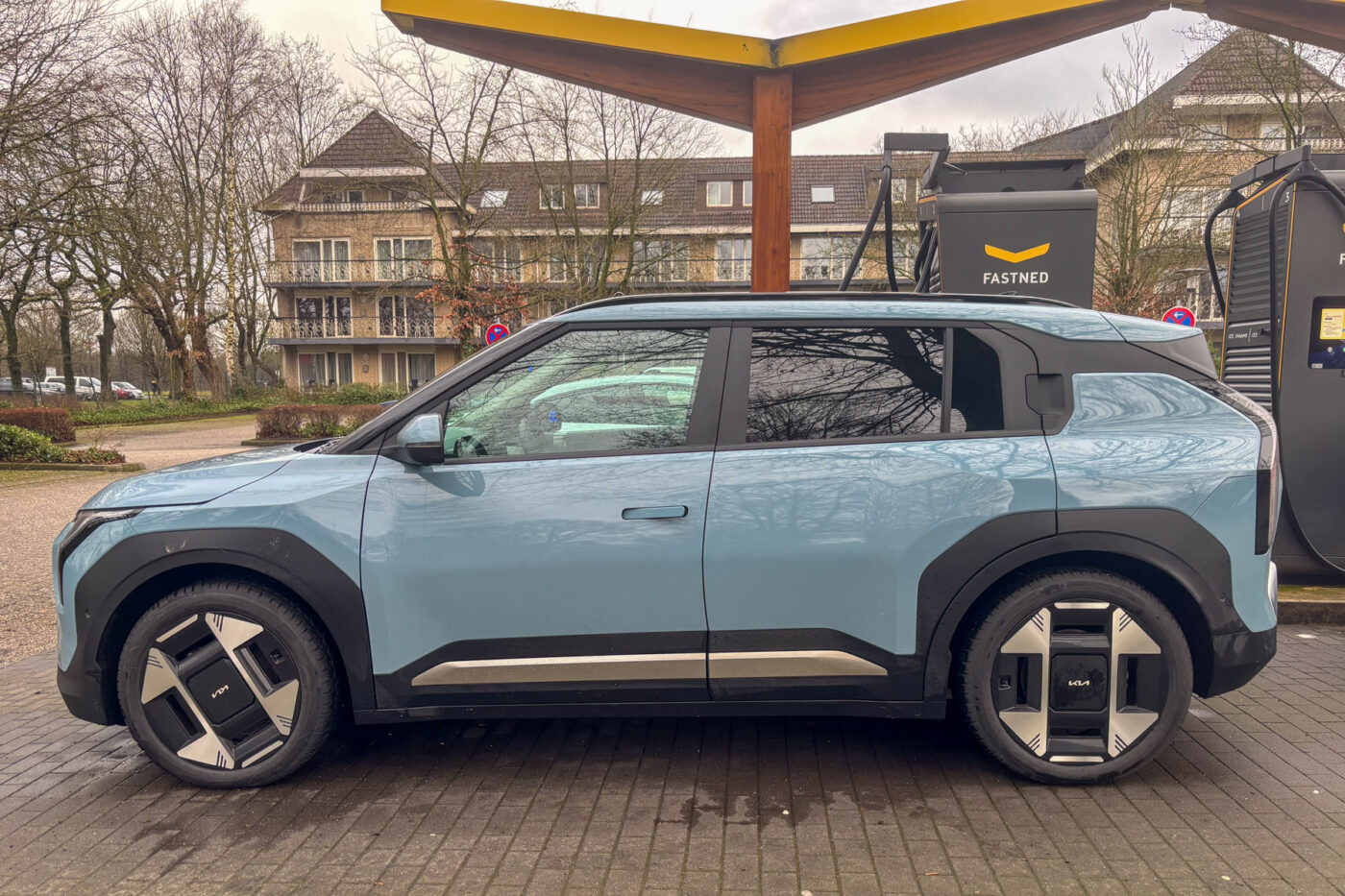
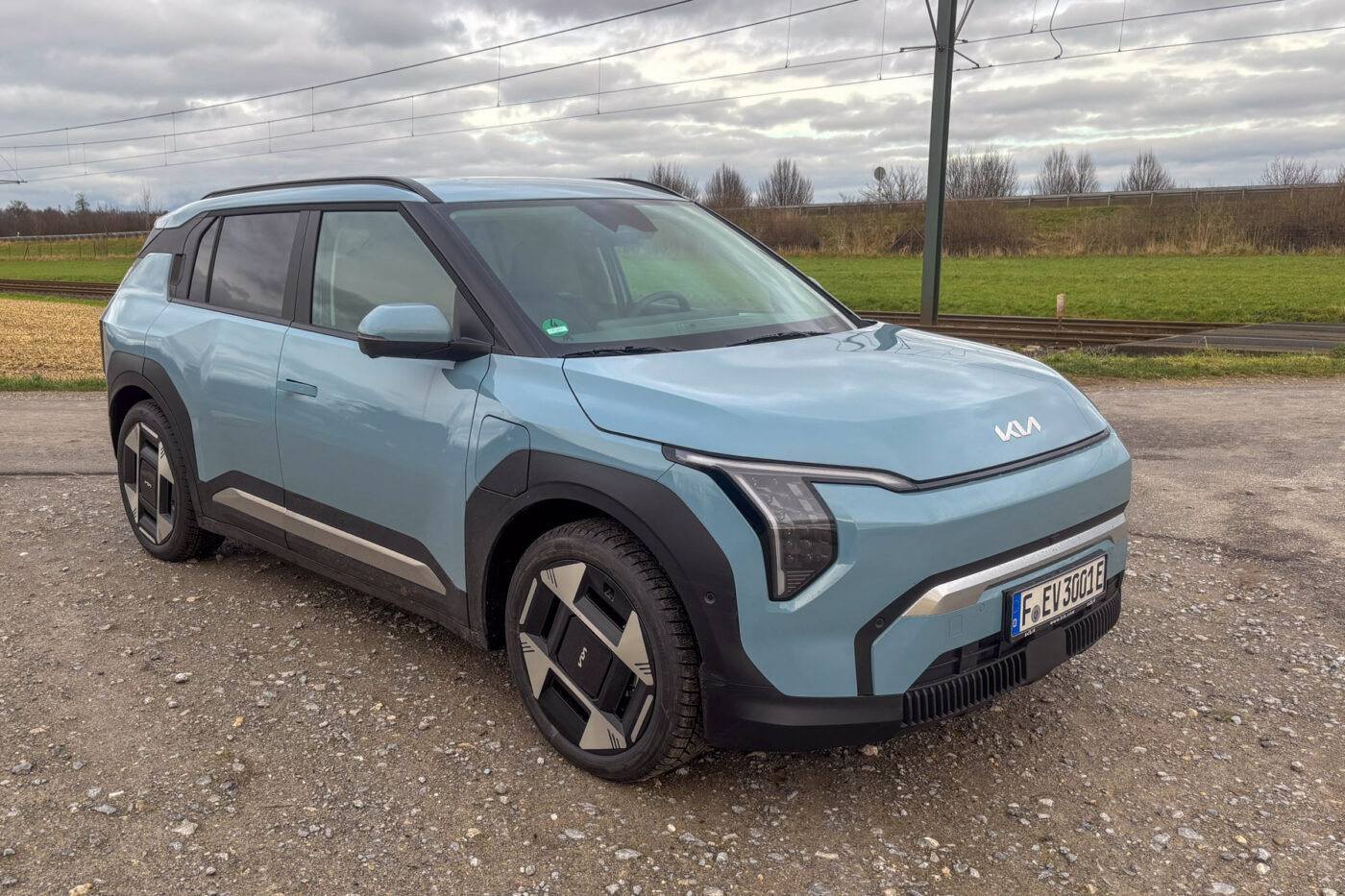
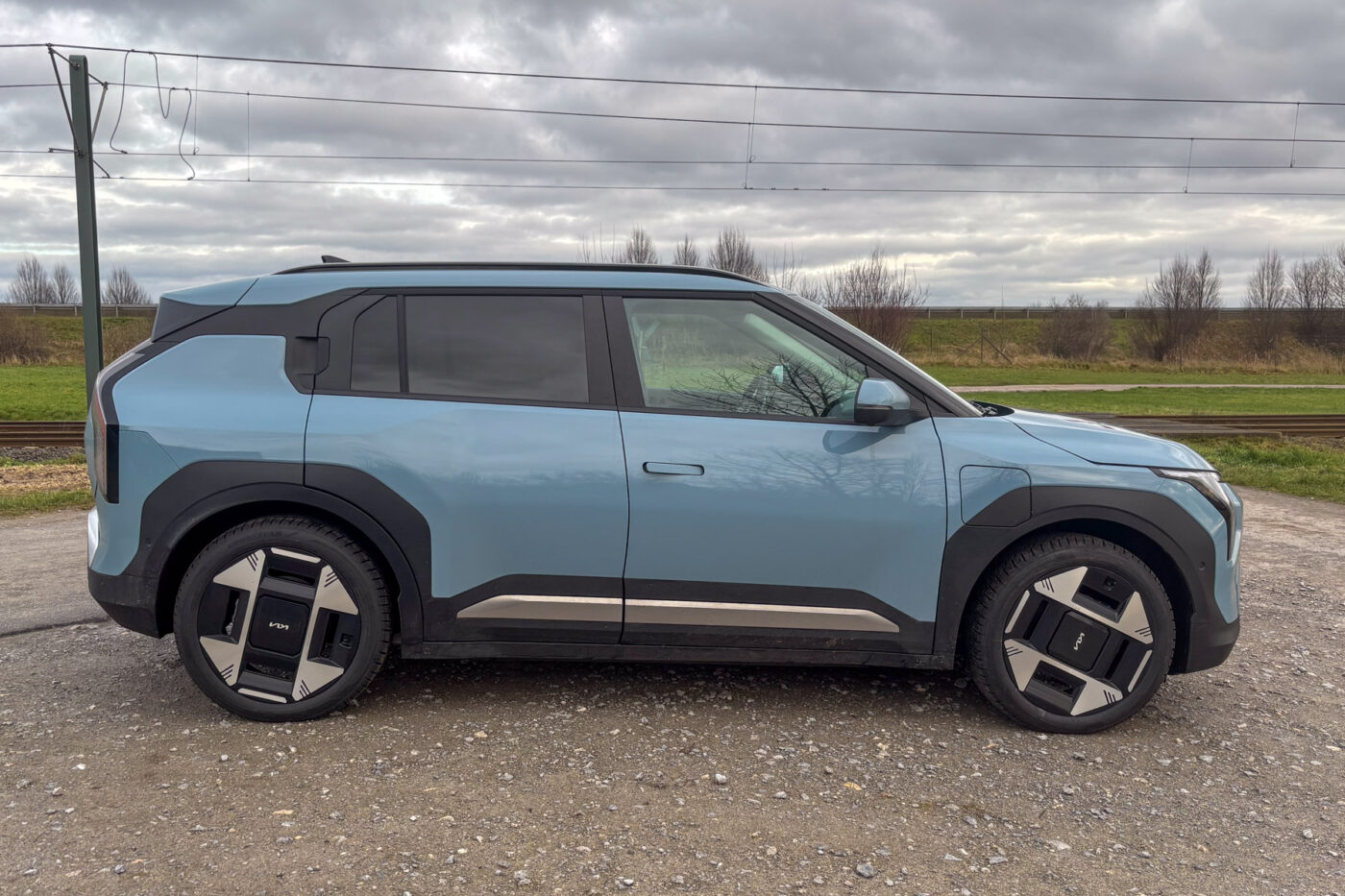
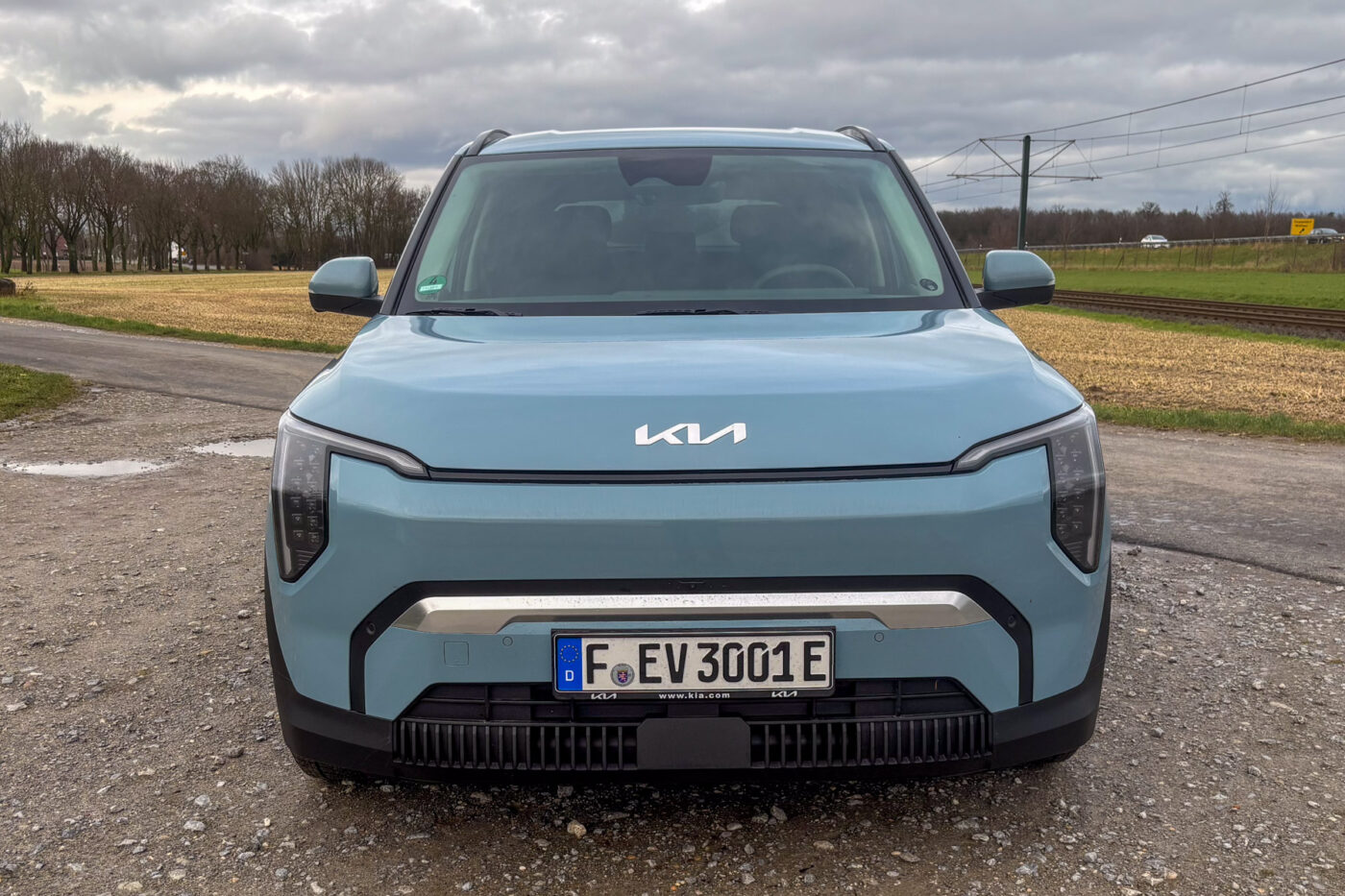
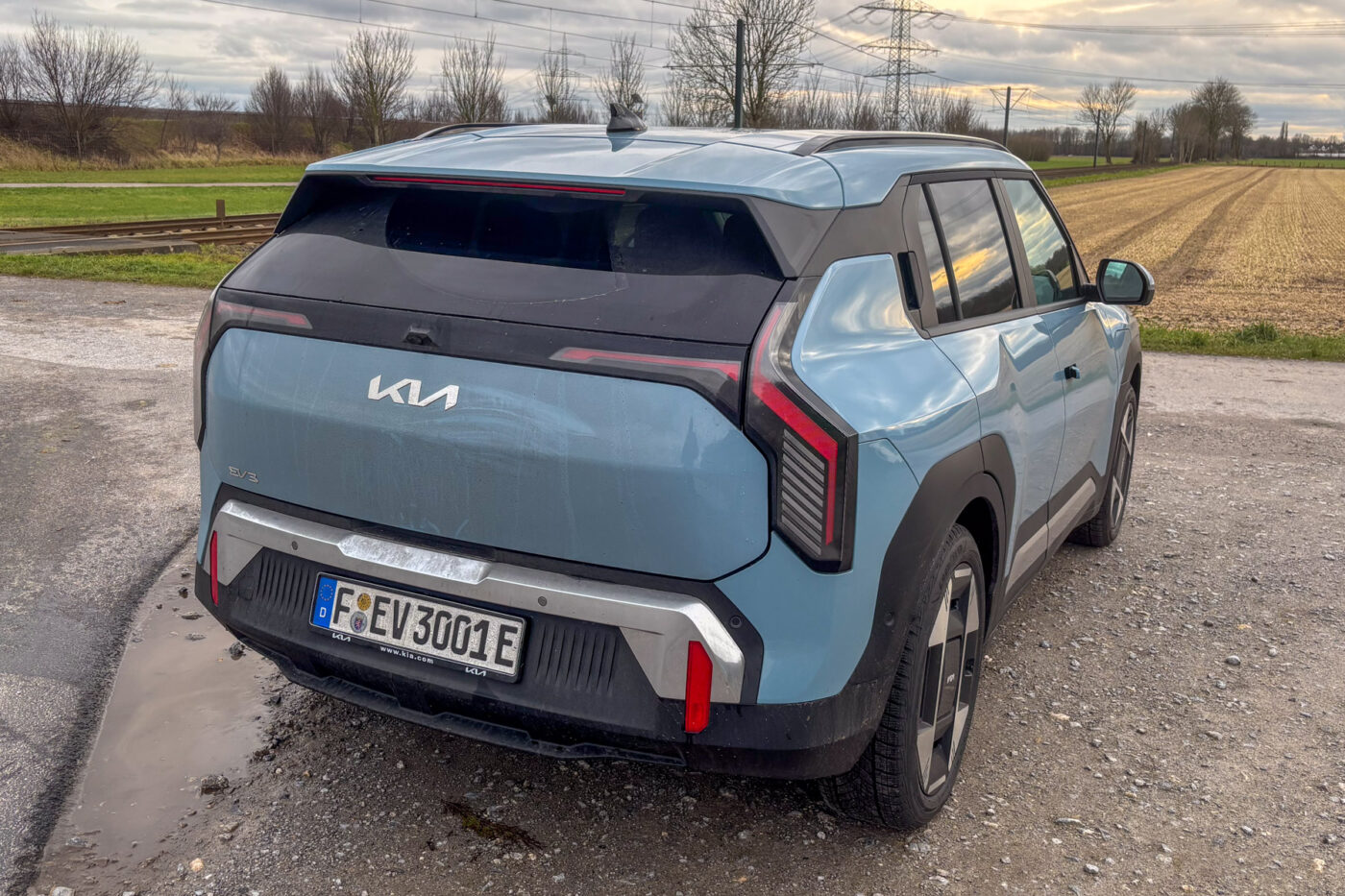
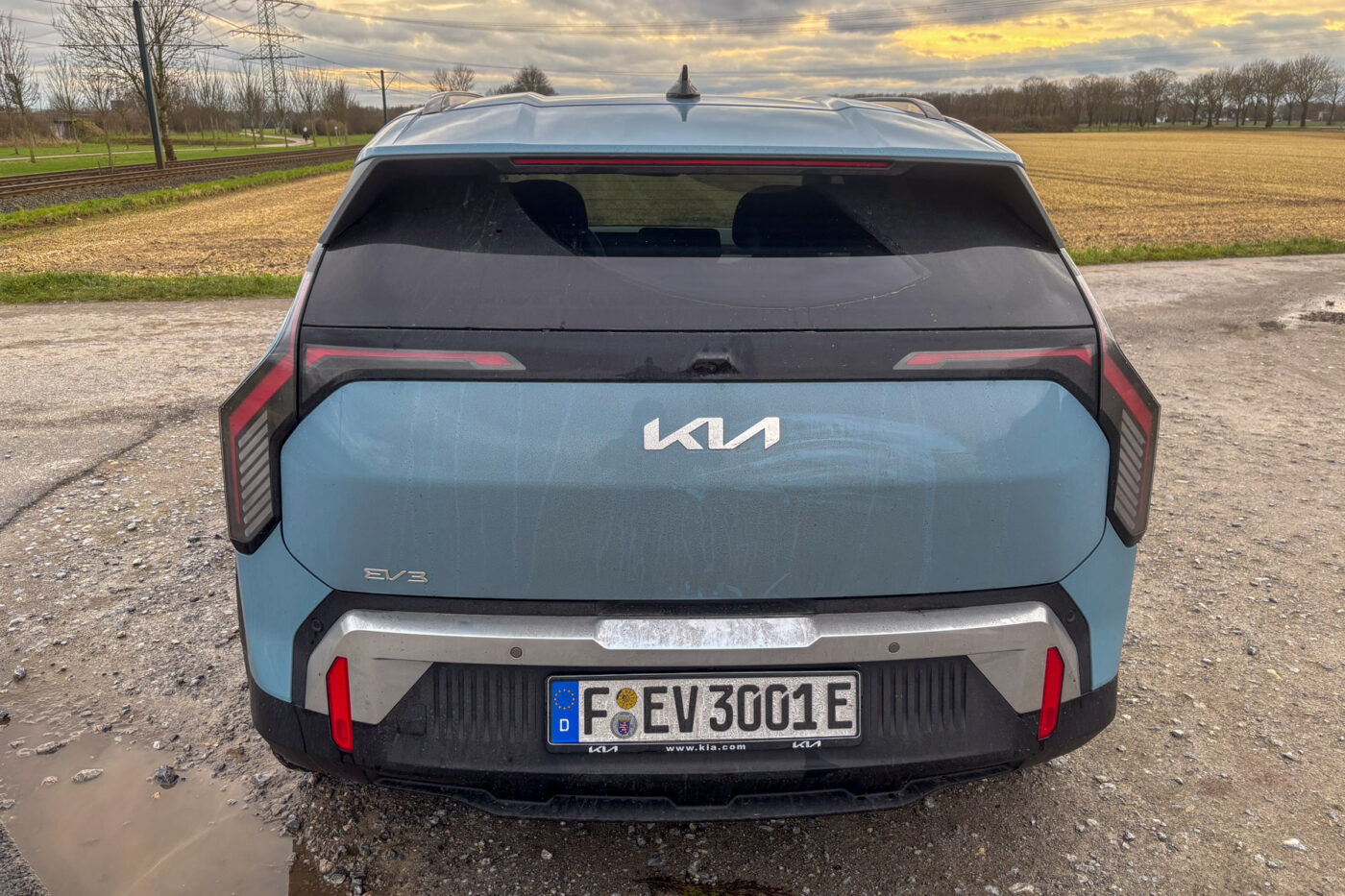
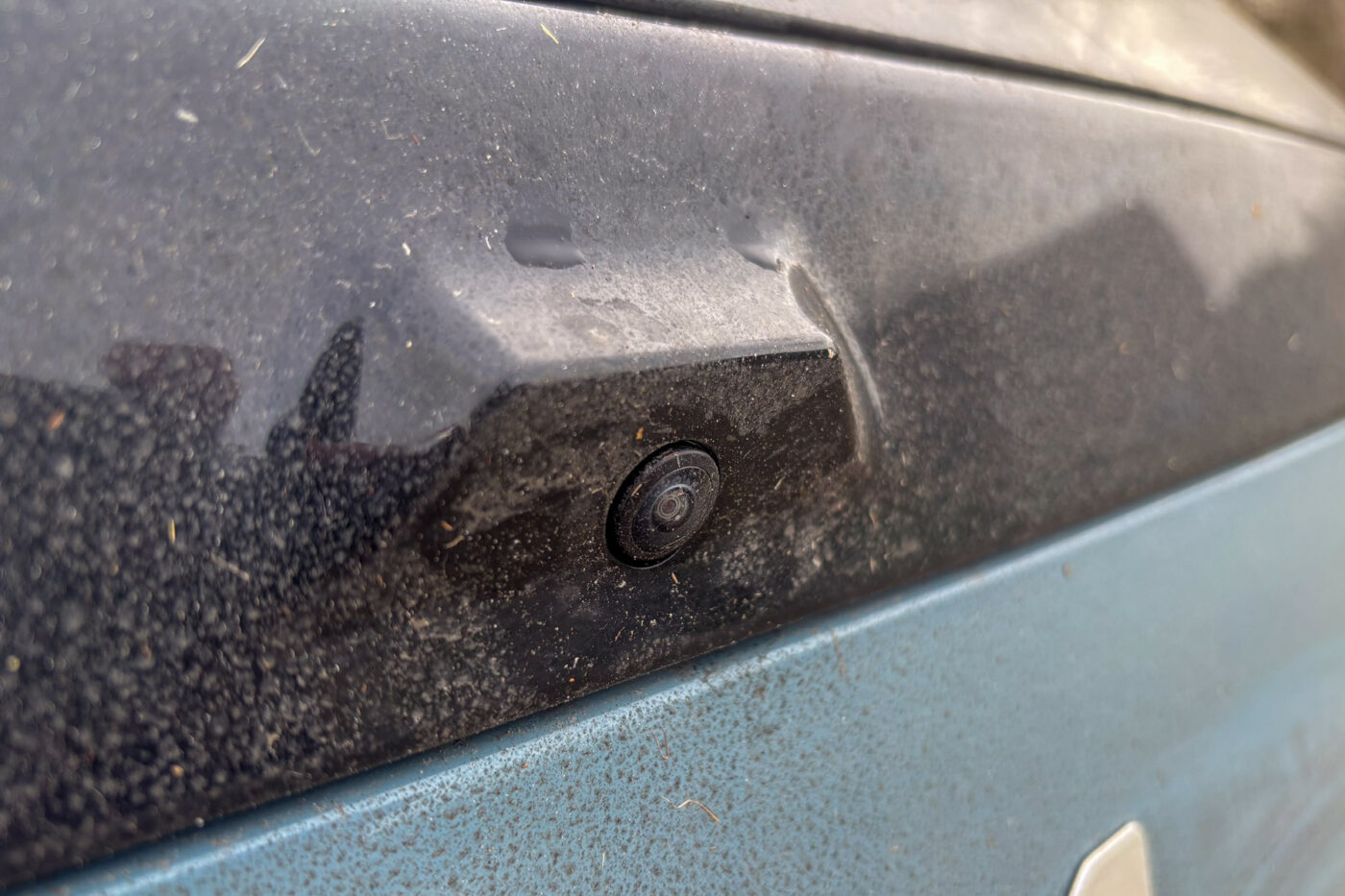
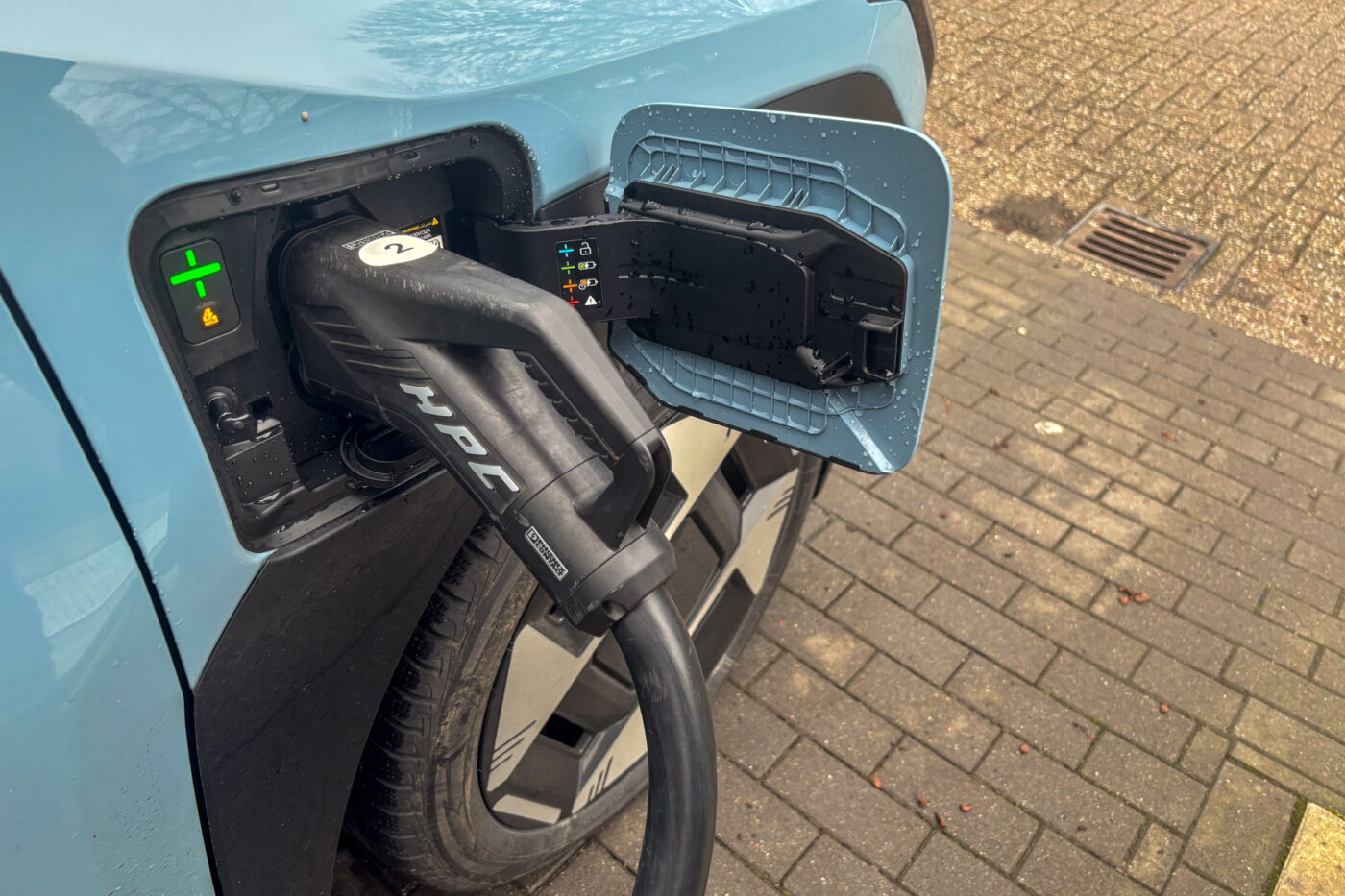
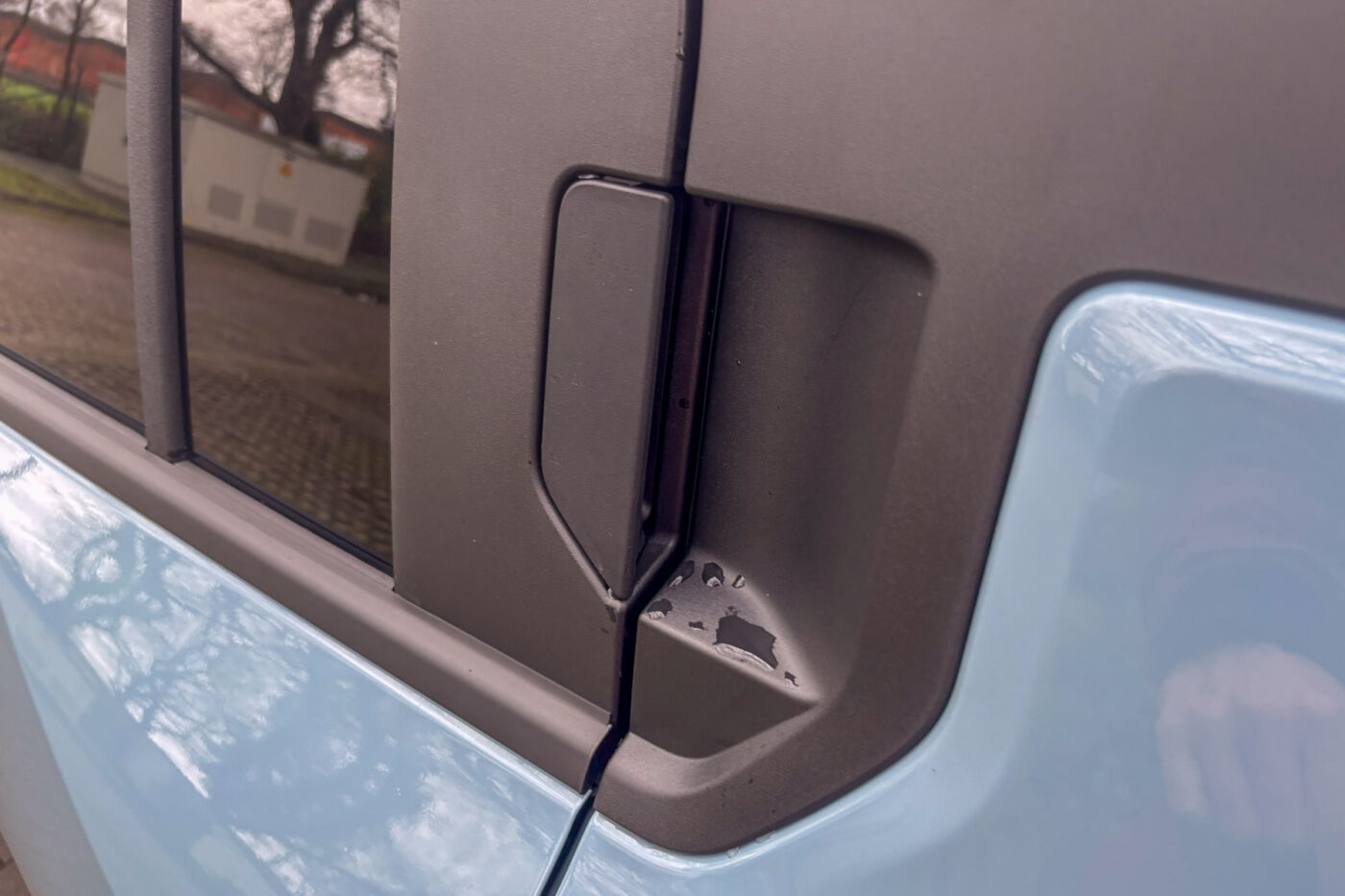
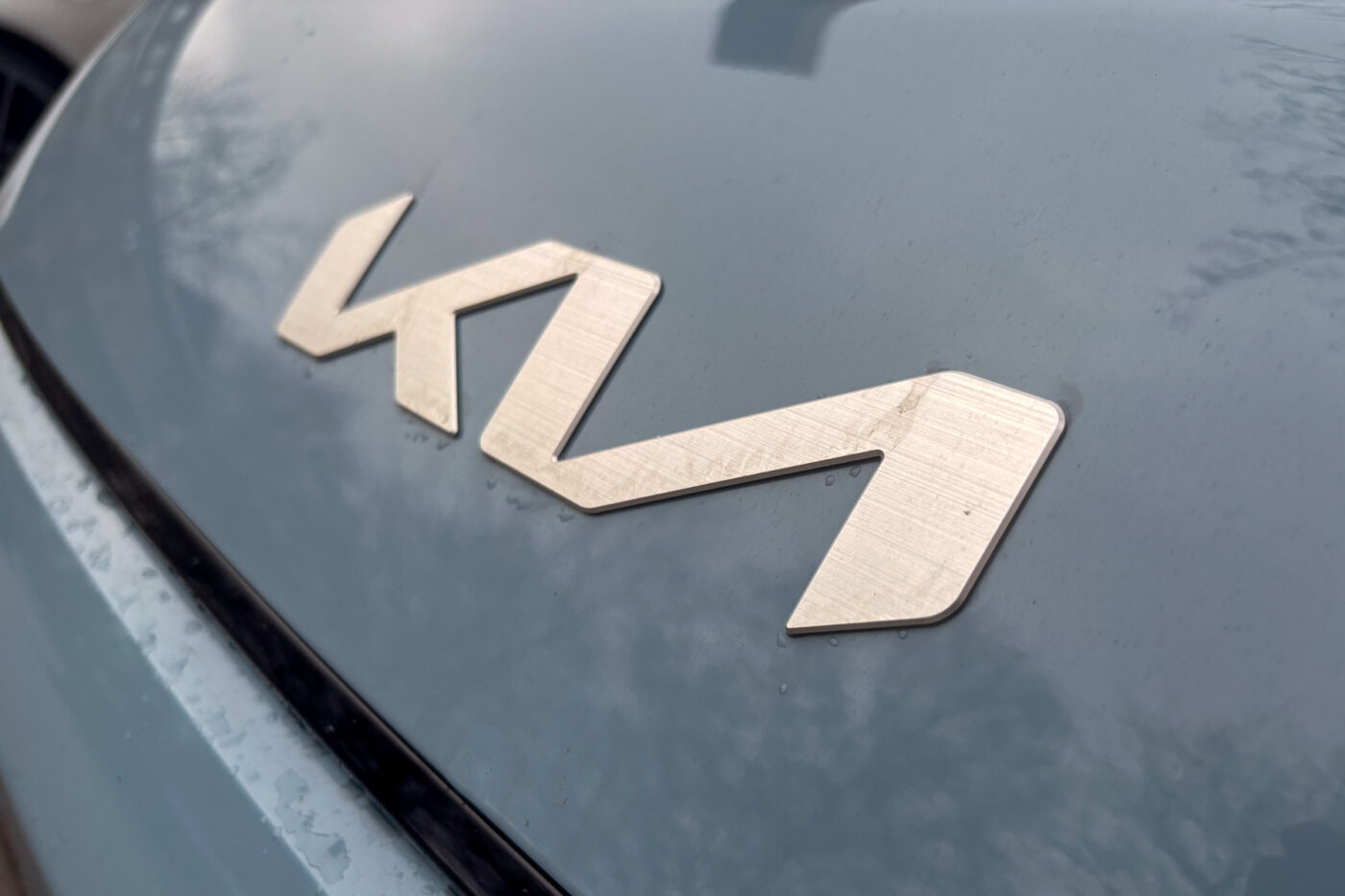
At any rate, here at electrive, we’re not focused on critiquing style, we’re all about the electric drive. The EV3 houses a permanent magnet synchronous motor (PSM) under its short front hood that drives the front wheels with 150 kW of power and 283 Nm of torque. The 470-kilogram battery between the axles (2.68-meter wheelbase) provides enough energy for up to 605 kilometres, according to WLTP. In our winter test, the realistic range was more like 400 kilometres. More on this in a moment.
With 150 kW, the EV3 is very well motorised. The acceleration from zero to 100 kph in 7.7 seconds doesn’t sound particularly rapid, but I certainly didn’t feel the need for more power over just under 700 kilometres. On the contrary. To utilise the motor’s power in Sport mode, the road must be dry and have a good grip. Even in slightly damp conditions, the traction control intervened – perhaps a little too roughly, so Kia could do with some fine-tuning there. In the other driving modes, we used ‘Normal’ and ‘Eco,’ with a smoother power delivery, where this was not a problem. Well controllable, with different response characteristics depending on the driving mode and more than sufficient for everyday use.
Up to 450 km possible in summer
The motor is also relatively efficient. On days with an outside temperature of around ten degrees, it was possible to consume only around 17.5 kWh/100 km on the highway, which is impressive. With significantly colder temperatures in January and a mixture of short trips and freeway driving, the test average was 21.9 kWh/100km, corresponding to a real-world range of around 370 kilometres. As temperatures rise, however, consumption should fall noticeably below the 20 kWh mark – based on the 17.5 kWh/100 km we achieved, 440 kilometres would be possible on a single charge. In milder temperatures, the compact EV3 could also manage 450 kilometres.
In other words, with common everyday routes such as commuting to the office or trips to the shops or sports club, one battery charge (assuming no extreme commuting distances) should last most users around a week. And even at temperatures around freezing point, it was possible to get 300 kilometres on the freeway – a distance after which it is better to take a short break.
When it comes to fast charging, it’s important to note that the EV3 is not the previously announced 800-volt version of the E-GMP. The compact model has to make do with 400 volts for cost reasons. This, unfortunately, means that the extremely short charging times of 18 minutes from the EV6 aren’t possible here. Even so, the EV3 does a great job: although it is specified with a maximum charging capacity of 128 kW, we even reached 131 kW – and that with a charge level of over 60 per cent. Over 120 kW is available quite consistently in a wide range up to 70 per cent charge level, after which it drops quickly – initially to 75 kW, and at 80 per cent, it is still around 50 kW. Up to 70 per cent charge level, the battery can be used quite well for fast charging on long journeys – the further ten per cent up to the 80 per cent mark took another eight minutes during our test drive.
In total, we could charge from 15 to 80 per cent in 32 minutes – not quite the factory specification of 30 minutes for 10 to 80 per cent, but justifiable at single-digit temperatures. The big ‘but’ is that, unlike the EV6, Kia is not setting any benchmarks with this. The ID.3 Pro S can charge with up to 175 kW at its peak, reaching 80 per cent after 26 minutes. Volkswagen’s MEB, which initially took a lot of criticism, has now reached a decent level. And even with the smaller battery, the ID.3 is ahead of the Kia. With the 58 kWh battery, the Korean car can charge at a maximum of 101 kW, while the 59 kWh battery in the ID.3 Pro can handle up to 165 kW. Not a decisive factor for many customers with their own wallbox. Anyone who drives long distances or is otherwise dependent on fast chargers should consider the charging capacity and charging behaviour of the electric car.
Pre-conditioning the battery is important here. The EV3 does this automatically if a charging stop is planned in the route guidance, but the function can also be activated manually in the menu. This only works if the system classifies the battery temperature as ‘low or ‘high.’ It is then brought into the ‘medium’ range by heating or cooling. If the temperature is already ‘medium,’ preconditioning cannot be started. This also applies if the EV3’s remaining range is too low. At a 13 per cent charge level, we were no longer able to activate the system manually – so the battery level can’t be too low, even if you want to preheat the cold battery for the nearby fast charger, and a five per cent charge level on arrival would be completely sufficient.
Kia also takes a very careful approach to another point that helps customers avoid being stranded with an empty battery: charge-stop planning. If you want to navigate to a destination and the system believes the remaining power in the battery is not sufficient (this distance is significantly less than the remaining range displayed), the software can automatically suggest charging stops. This works very reliably in and of itself, but unfortunately, the EV3 wants to head for the next charging station even when the charge level is sometimes over 20 per cent. If you rely on the car’s automatic planning, you will, of course, reach your destination safely – but this significantly limits the range of use of the battery, which is quite sizable. And as fast charging only really makes sense up to 70 per cent due to the drop in power, you can only use 50 per cent of the battery’s capacity if you make the next stop at 20 per cent SoC. Even with our winter consumption, 20 per cent would correspond to a range of around 80 kilometres. Kia could give its EV3 a little more credit here.
On the other hand, charging planning and the manual search for charging stations can be easily adapted to personal preferences by using filters. Here, the display can be set to specific operators or charging capacities—depending on which charging card you use or which operator’s prices suit you. This helps enormously if you don’t want to scroll through endless pages. After all, there are now many charging stations along a 400-kilometre route that the Kia can (theoretically) display.
In terms of software, the EV3 is not much inferior to its bigger brother, the EV9. Kia infotainment runs smoothly but can also be replaced by Apple Carplay or Android Auto. There is now video streaming, an AI connection, and a distance cruise control and steering assistant that work quite well. When cornering, the EV3 can reliably stay in a lane with smooth steering behaviour, but it takes a long time to automatically change lanes on the freeway. So long that you need a lot of space in traffic and therefore tend to change lanes quickly yourself – but the cruise control remains active and immediately takes over lane guidance again.
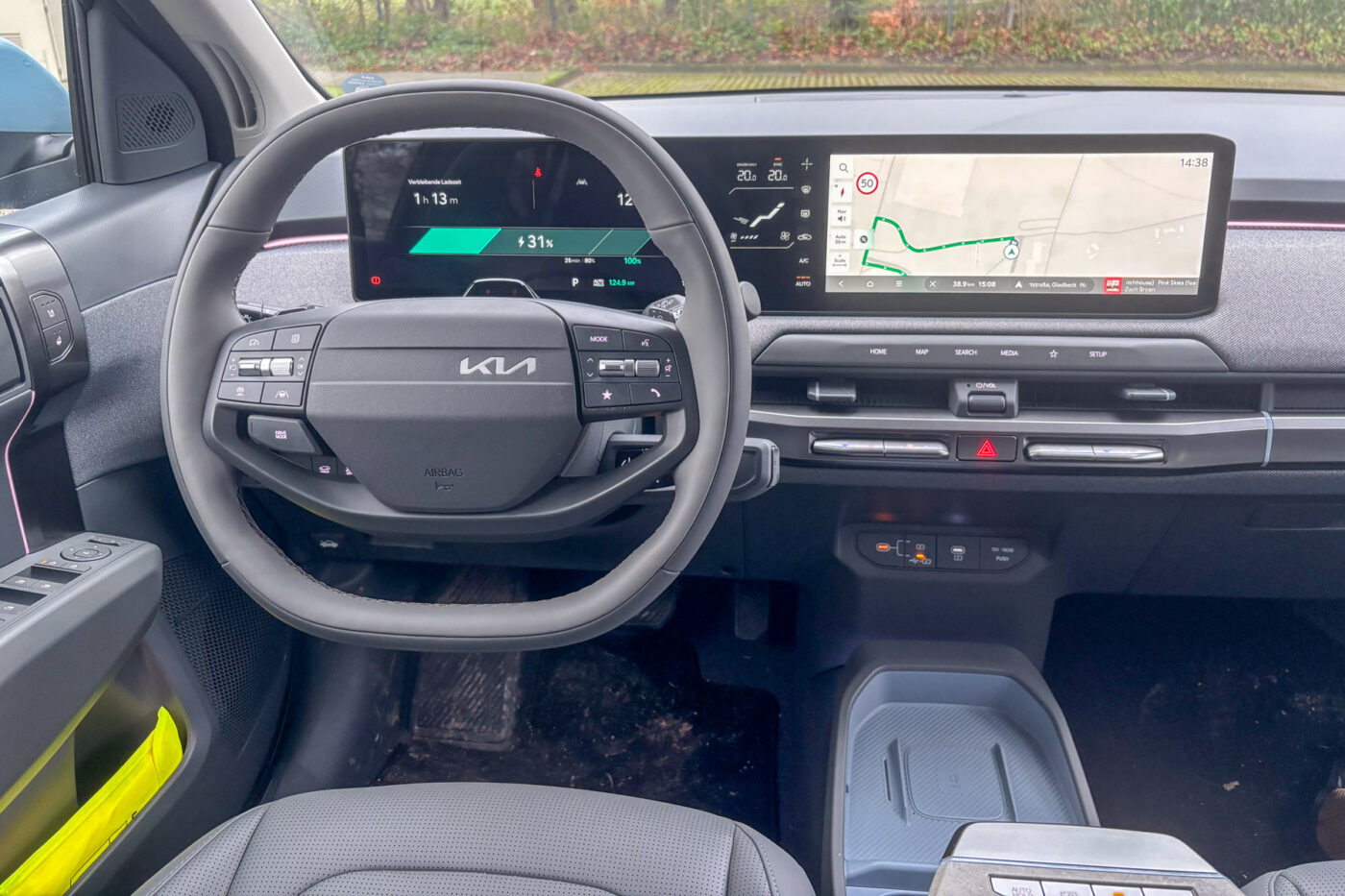
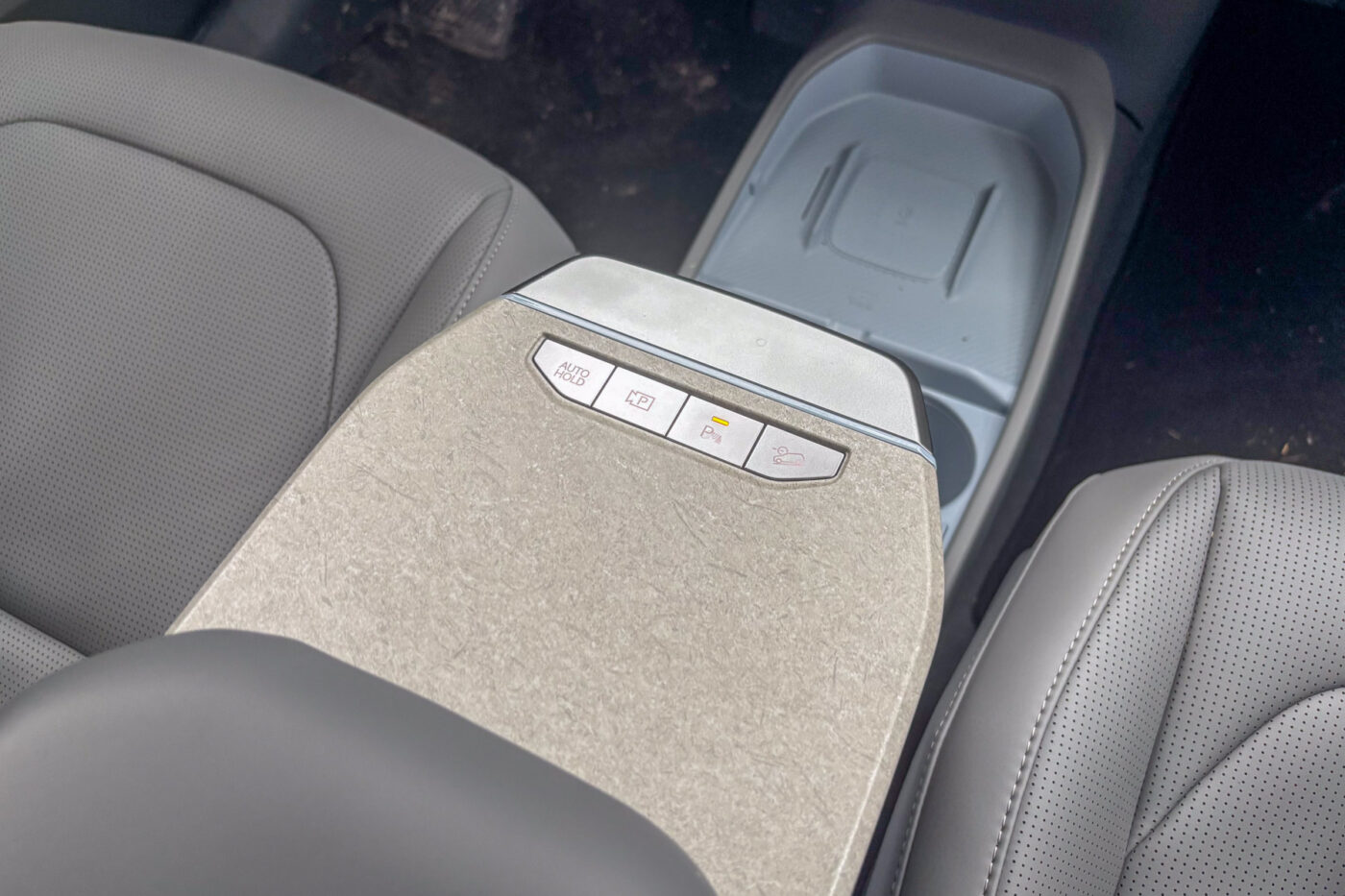
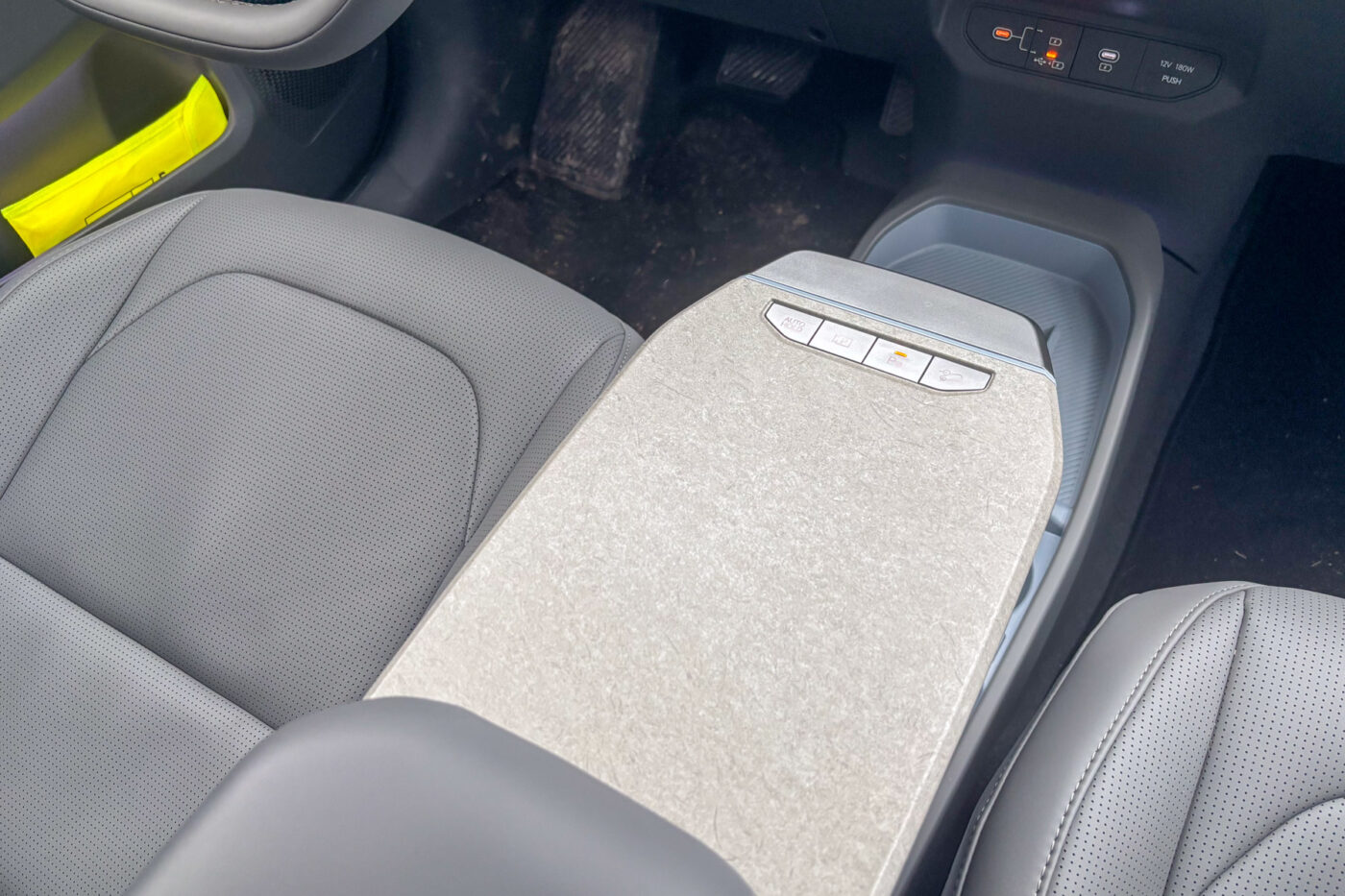
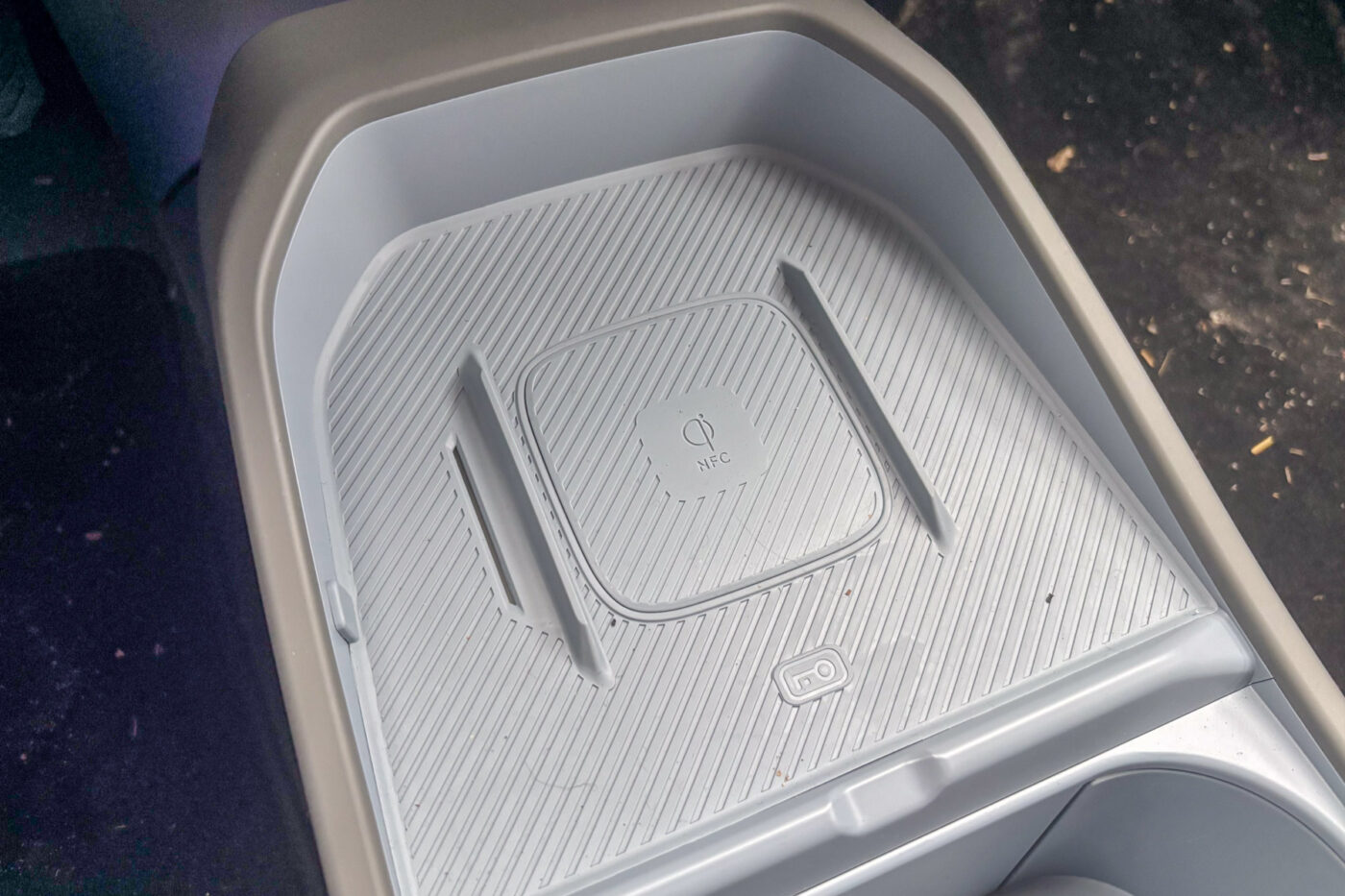
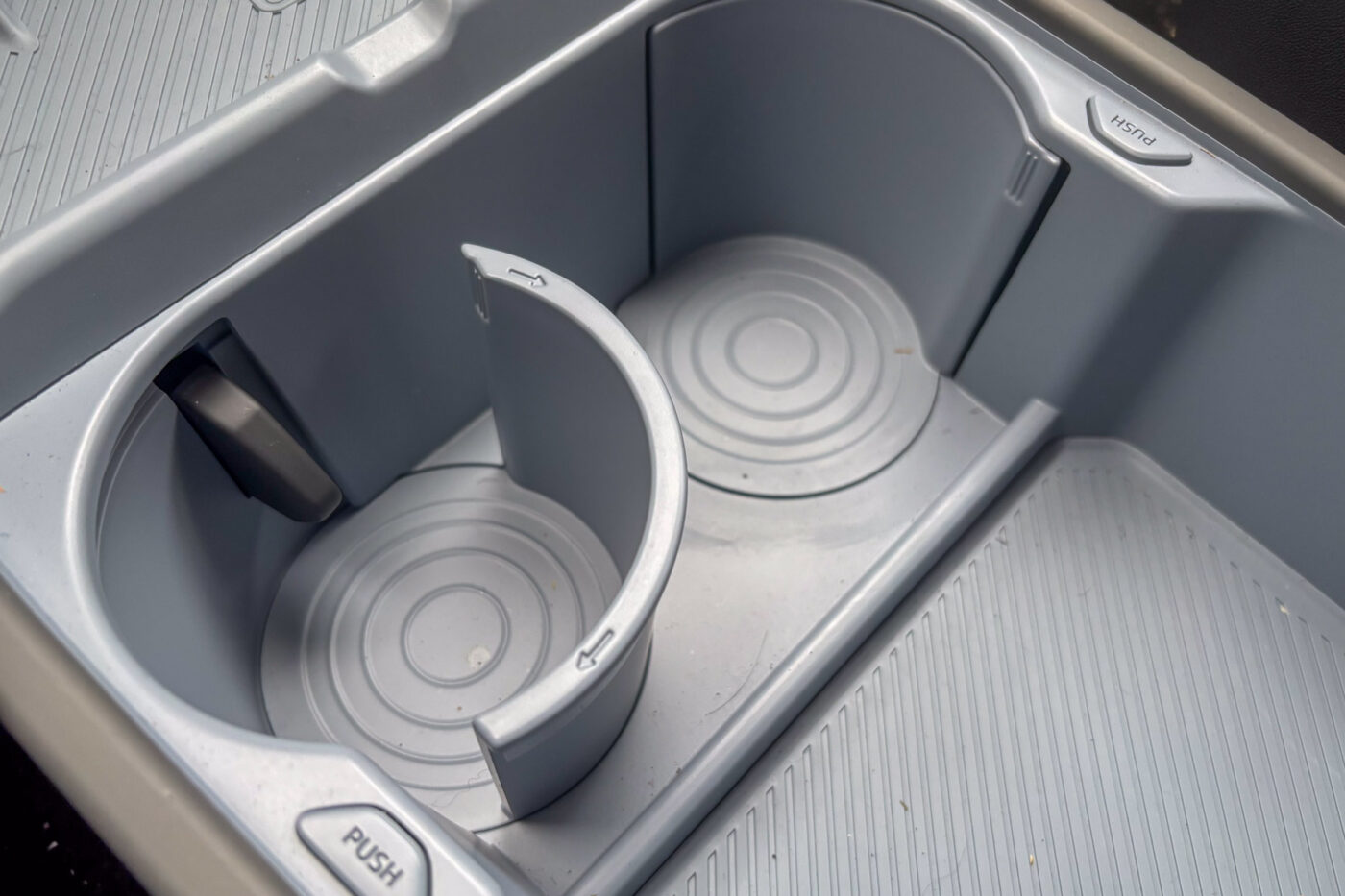
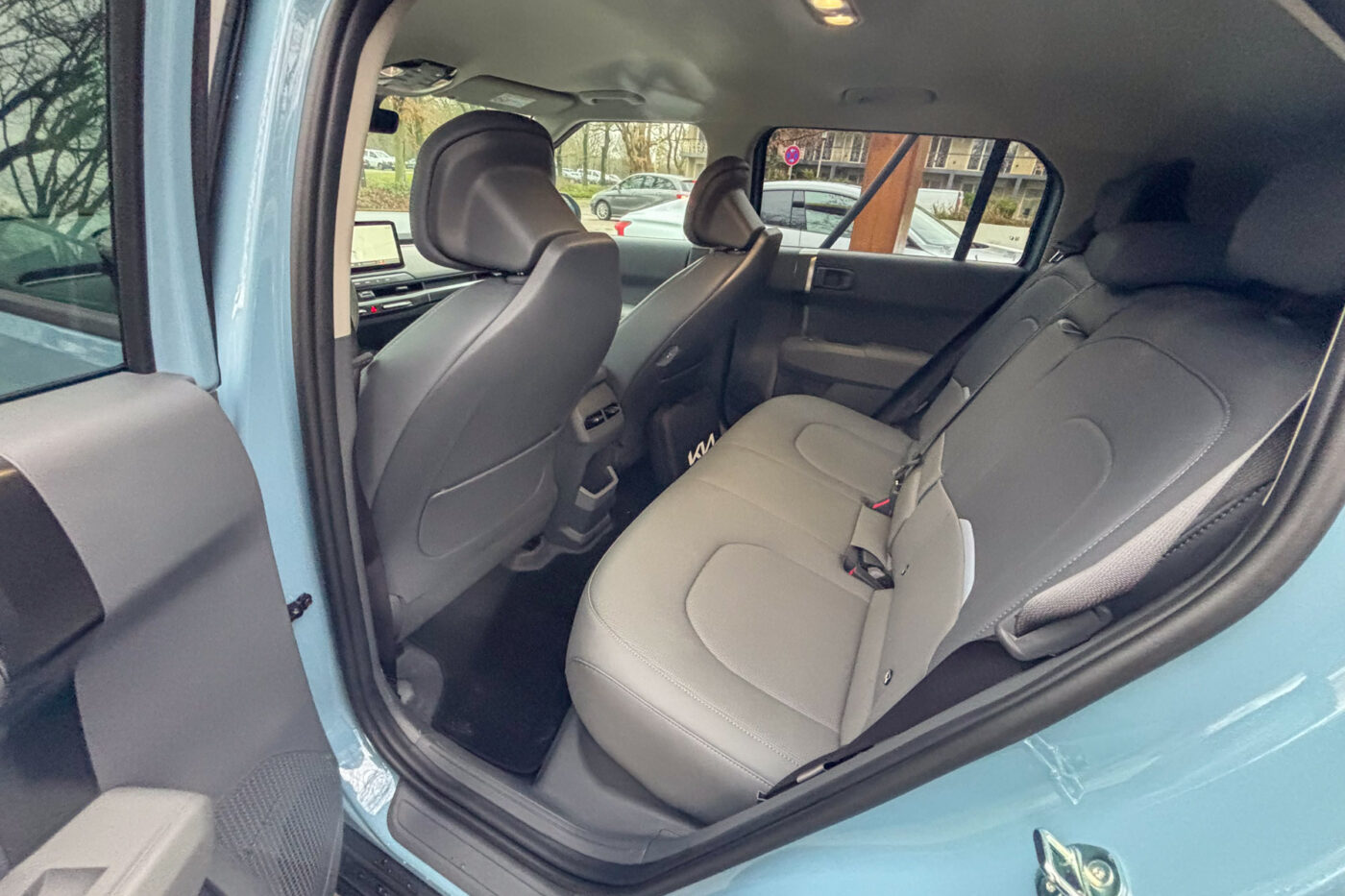
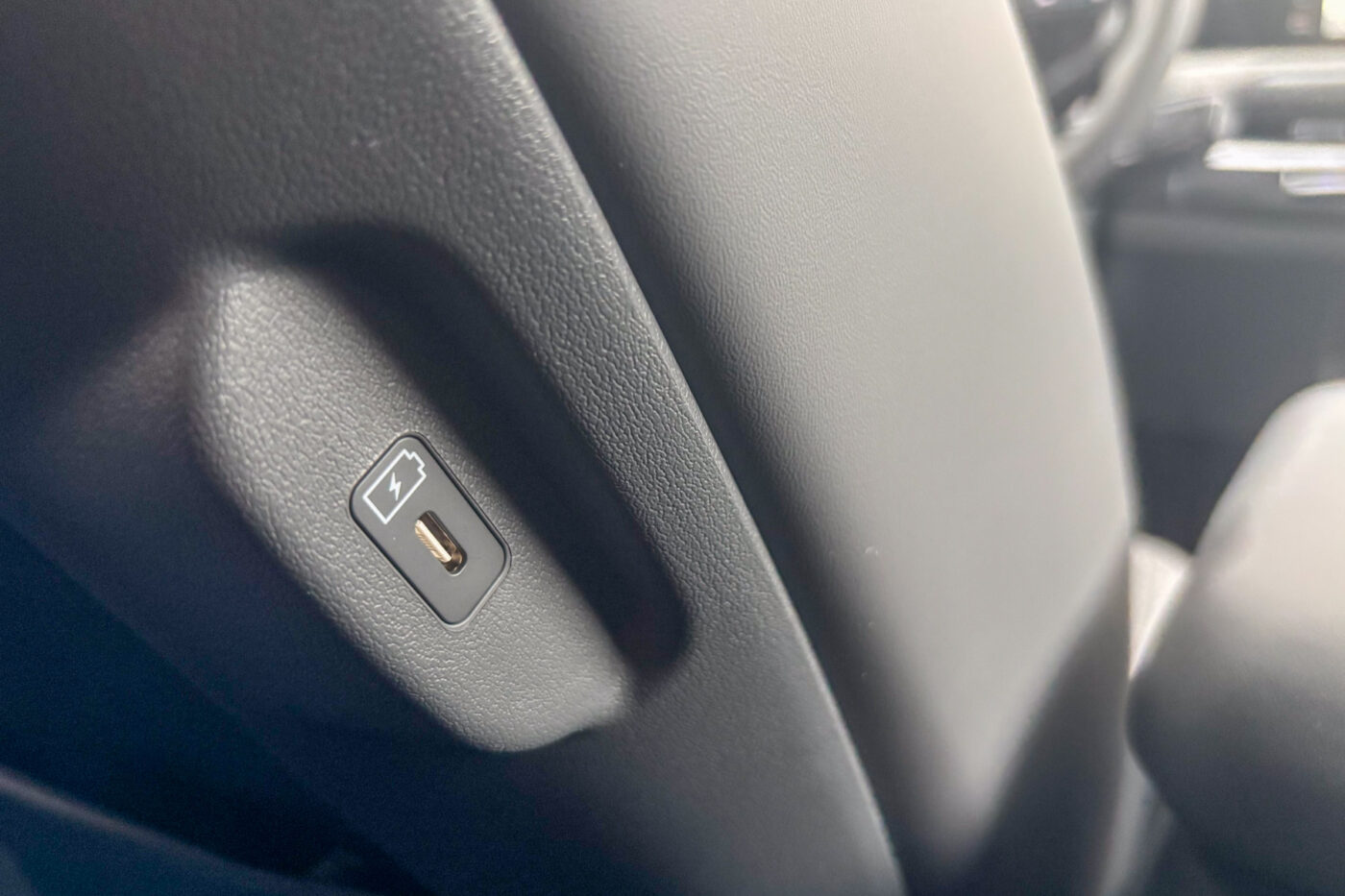
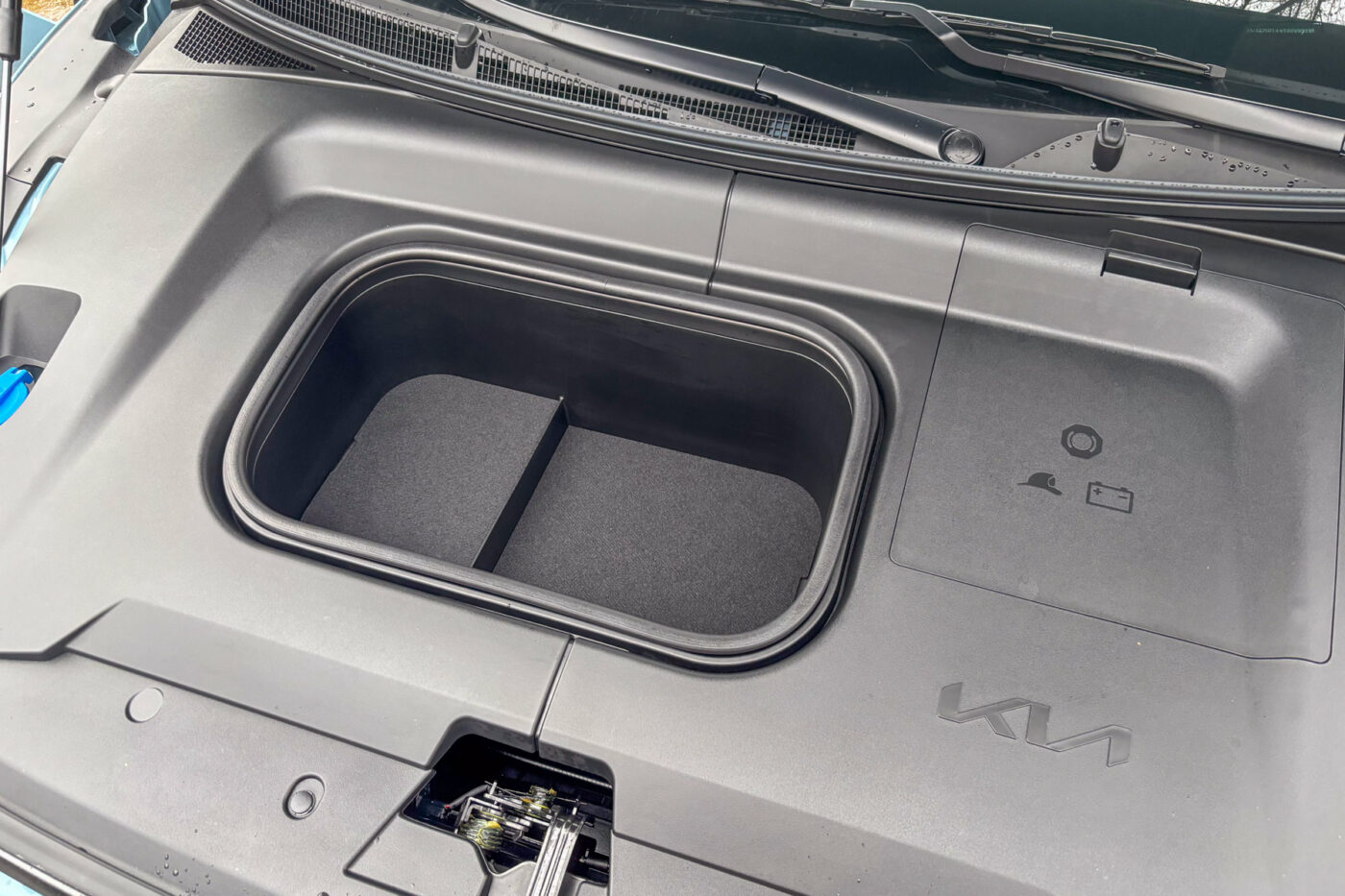
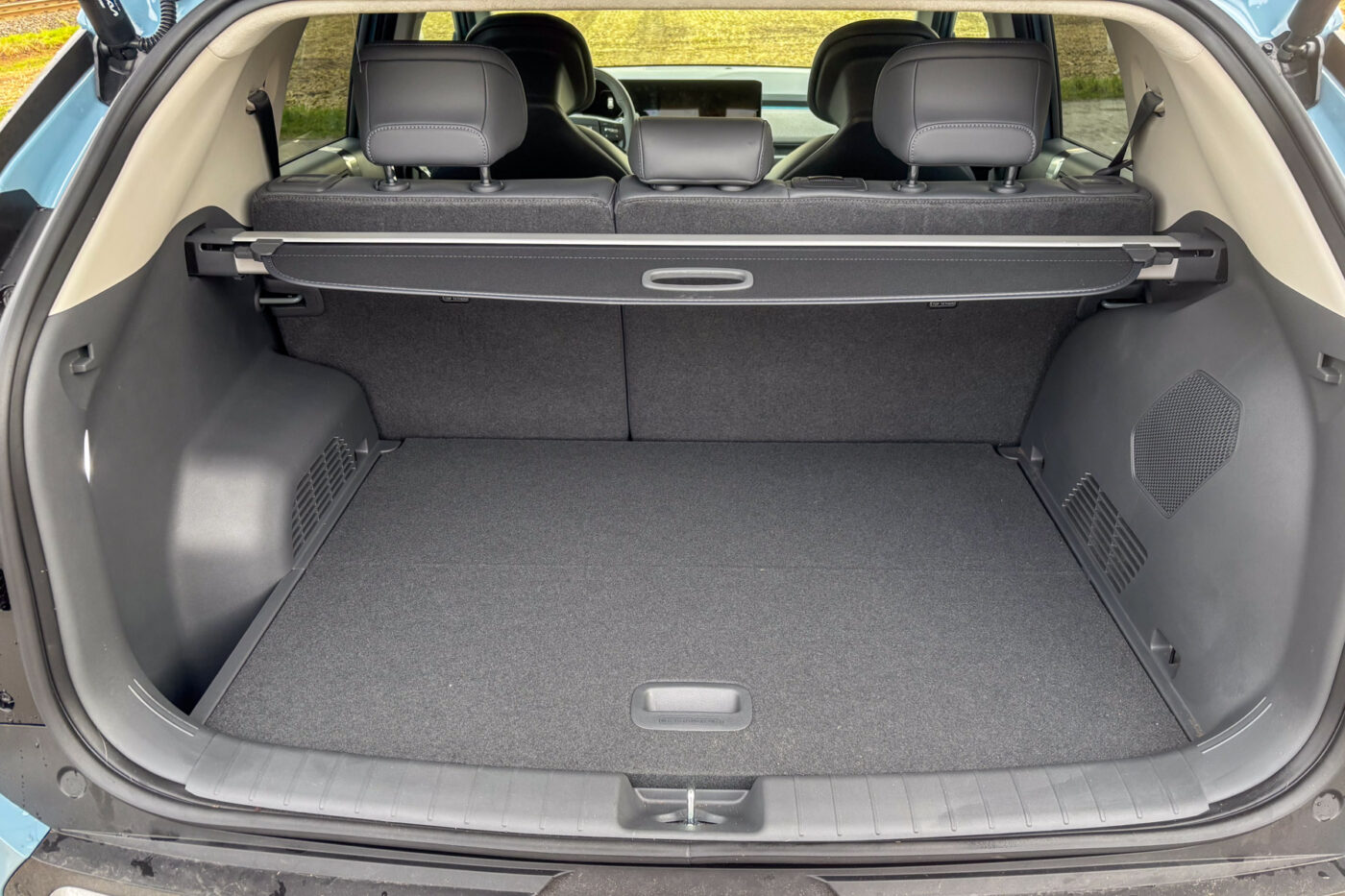
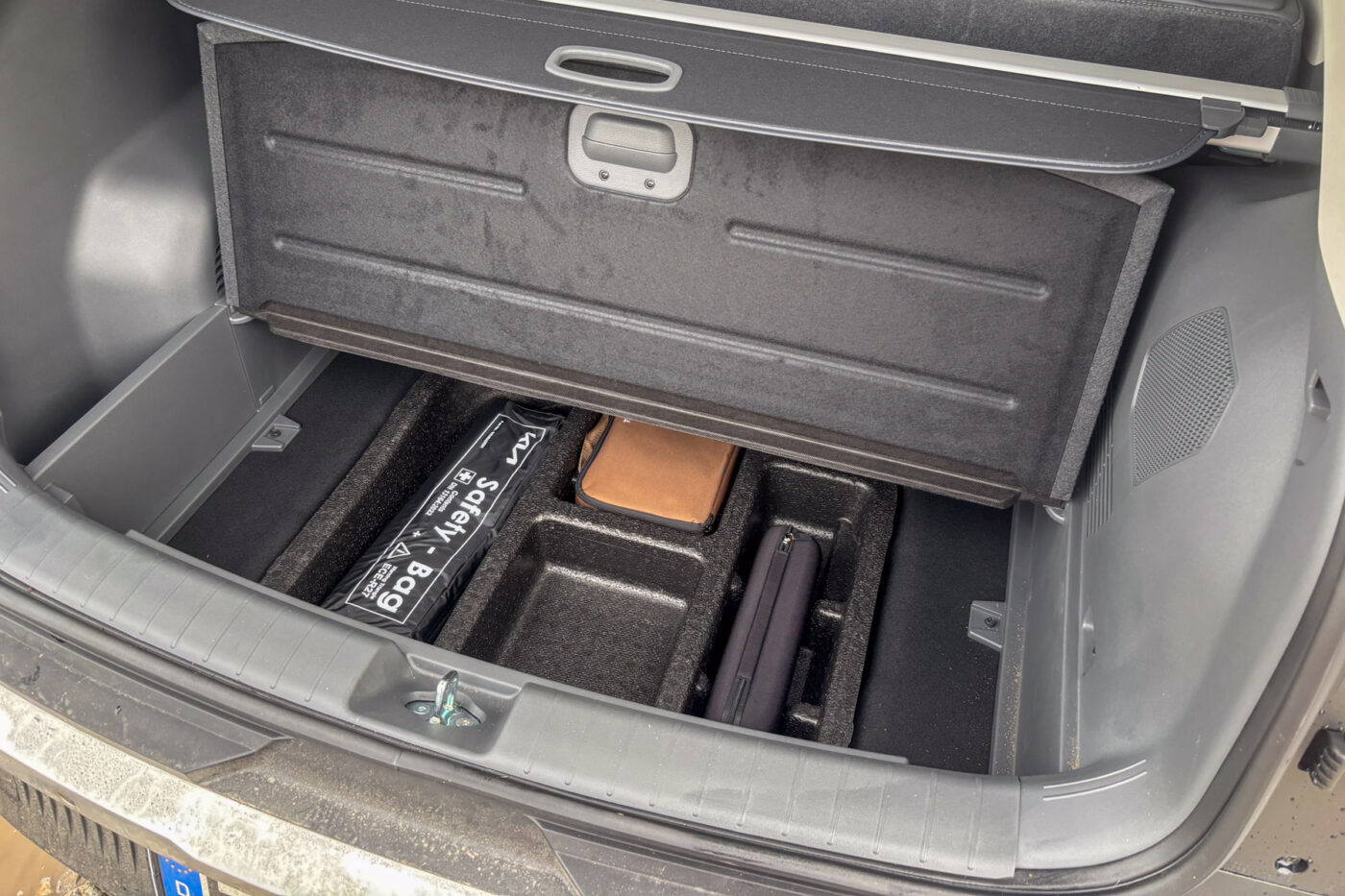
Not all of the car’s assistants work so satisfactorily. The ‘Intelligent Speed Assist’ in the EV3 also reacts hyper-nervously and beeps even if the detected speed limit is slightly exceeded. As this is not always correct, it beeps with alarming frequency in the EV3, but in the case of speed limit detection, this can be quickly switched off with a long press of the mute button on the steering wheel. The attention assistant, which monitors the driver via a small sensor on the steering column, is unfortunately as sensitive as the speed limit detection. Even the slightest distraction is enough for the car to issue a warning.
In essence, of course, it’s okay to be warned if you don’t look at the road while talking to your passengers or get lost when choosing the next playlist on the infotainment screen. In the EV3, however, a quick glance at the driver’s display or the wing mirror is enough to trigger the system. Another example: with my seating position, the steering wheel covers the top edge of the cockpit display as well as part of the air conditioning control, which sits between the cockpit and infotainment screen, as in the EV9. So, I had to move my head slightly to switch on the rear window heating and got a BEEP. The system would benefit from a little fine-tuning, but nothing that couldn’t be improved with a software update. There is another, admittedly minor point of criticism: the reversing camera is integrated into the trunk lid in a very exposed position and, therefore, gets dirty easily in wet conditions.
That said, most things seem very well thought out. Operation is intuitive, whether via the buttons (no touch fields) on the steering wheel or the understandable combination of haptic switches in the centre and the touchscreen – apart from the small (personal) problem with the hidden control for the windscreen heating. The operating logic is designed so that even Kia newcomers can cope well. It is precisely this clientele that the EV3 is aimed at as an affordable compact electric car.
Sophisticated design, criticism of details
There are small exceptions: the on/off switch is no longer necessary for electric cars – getting in, buckling up, pressing the brake and engaging a gear are enough individual steps to declare the intention to drive. The ‘problem’ in the EV3 is not so much the switch itself as its location on the inside of the steering column lever, where, on the outside, you select the driving mode or switch back to ‘P.’ During the test, it happened more than once that I parked the car, got out and was reminded with a long beep that the ‘ignition’ was still on, as would be the case with the combustion engine. I also drove the BMW i3 for several years, which had a very similar solution – but this was sufficiently compensated because the start/stop button in the i3 was clearly visible and not as hidden as in the EV3. Incidentally, in the Kia, you can virtually skip the ‘P’ position and switch the car off directly with the gear engaged. In my opinion, one of the two switches is thus superfluous, but even I got used to switching the EV3 off correctly at some point during the two weeks of testing.
Other details, on the other hand, are extremely well-designed. There is still a large storage compartment under the centre console, and rotating cup holders at the front can hold drinks, bottles, and cups. In contrast to previous versions, where only containers with the correct diameter could be placed in the cup holder without wobbling, a small lever now holds narrower bottles securely in place. The inductive charging cradle for smartphones is easily accessible, and there are more than enough USB-C ports to power mobile devices.
The position of the on/off switch, a slightly dirty reversing camera, and somewhat sensitive assistance systems – as these are some of the biggest criticisms of the EV3, it is clear that the car is a success! The space inside is very good for 4.30 meters in length, both front and rear, and the boot is also pleasantly large in the standard configuration. However, if you want to use the maximum load volume and fold down the rear seat backrests, the EV3 lacks some space compared to the Niro EV. With a towing capacity of up to 1,000 kilograms, it clearly outperforms its predecessor – as well as the ID.3’s factory-fitted zero kilograms. Unlike the Volkswagen, there is also a frunk, although it’s very small due to the front-wheel drive and is more of a storage space for the optional vehicle-to-load adapter. There is hardly any room for a three-phase Type 2 charging cable.
The two battery sizes that Kia offers provide customers with sufficient choices. As a rule, the 58 kWh battery for 35,990 euros will be fine for most uses. Those who really travel a lot or want to have a large battery in their first family car for excursions and vacation trips will also be well served with a base price of 41,390 euros. With the mid-range ‘Earth’ equipment line of our test car (from 43,690 euros with the large battery, otherwise from 38,290 euros), we basically didn’t miss anything, and the top GT-Line (from 48,690 euros, only with the large battery) ranks above it.
The only thing I would have liked to see is a head-up display, as it would have been better at keeping your eyes on the road with the sensitive attention assistant, but a HUD is only available in the GT-Line equipment and even then is part of the optional P9 package “DriveWise – Park Pro” for 1,290 euros. This package makes a difference of over 6,000 euros compared to the otherwise good Earth equipment. A small point of criticism on the surcharge list: The heat pump does not come and costs an additional 1,000 euros as part of the winter package.

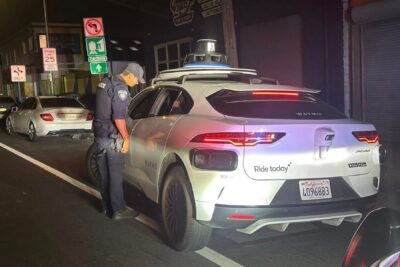
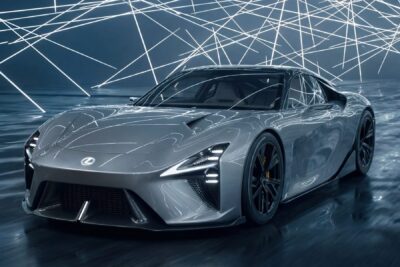
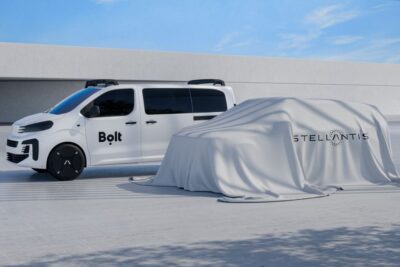
0 Comments